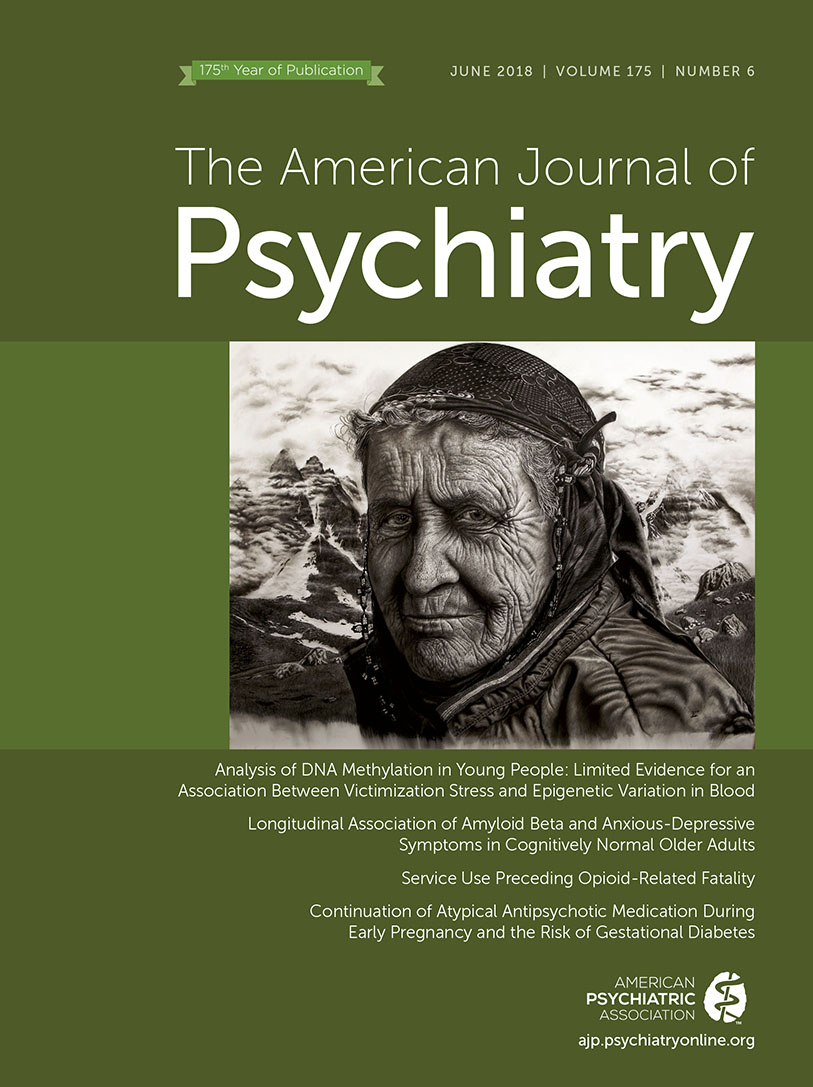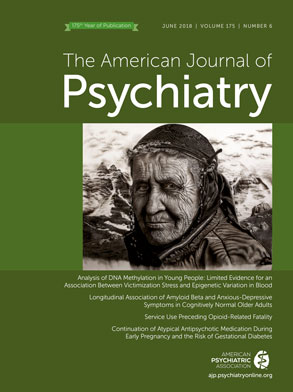Alzheimer’s disease is the commonest neurodegenerative disease of aging and is characterized by a slow process of neuronal damage that later leads to cognitive and functional decline. We have few clues as to how to reverse the clinical decline, and thus “cure” for Alzheimer’s disease means prevention of dementia, requiring that we identify persons at risk of Alzheimer’s dementia as early as possible. Asymptomatic persons with “positive” Alzheimer’s brain biomarkers are referred to as having “preclinical Alzheimer’s disease” and are the target of prevention efforts. Available biomarkers are either expensive (e.g., amyloid PET imaging) or target rare genetic variants of Alzheimer’s disease and thus are not practical for use at the population level. To achieve success, we must learn how to predict Alzheimer’s disease with biomarkers that are inexpensive, noninvasive, and widely accessible, combined with novel, sensitive clinical indicators. This issue of the
Journal contains two relevant articles, one by Axelrud et al. on polygenic risk score for Alzheimer’s disease in children (
1) and the other by Donovan et al. on depression as a risk factor for Alzheimer’s disease (
2).
In recent years, genome-wide association studies (GWAS) have identified 20–30 genetic loci associated with Alzheimer’s disease, in addition to the long-known apoE4 risk allele. Each candidate gene adds a small amount of risk for Alzheimer’s disease; there have been several recent efforts to combine them into a polygenic risk score, a quantitative score reflecting cumulative genetic risk. In the Axelrud et al. study (
1), the authors assessed the cross-sectional relationship between an Alzheimer’s-specific polygenic risk score and cognition and regional brain volumes in Brazilian and Canadian children. They defined this polygenic risk score from a large GWAS database (International Genetics of Alzheimer’s Project) and applied it to more than 600 children in Brazil (mean age, ∼10 years; range, 6–14). They found that increasing polygenic risk score was associated with worse recall and smaller hippocampal volumes in their Brazilian cohort. They were not able to replicate the findings in a comparable Canadian cohort.
This is a remarkable finding in itself. Other GWAS-derived Alzheimer’s polygenic risk scores predict cognitive and functional decline in older populations (
3), or loss of regional brain volume in young adults (
4). But this is the first study to quantify risk in
childhood, and as such it raises profound questions about the importance of brain development in the development of Alzheimer’s disease. Does Alzheimer’s pathology start this early in life? If it does, since amyloid is not deposited widely in the brain until about age 40 (
5), nonamyloid mechanisms must be at work. Or does the polygenic risk score reflect less robust development of cognitive reserve in childhood, which protects against Alzheimer’s disease? The Nun Study (
6) supported the latter hypothesis by linking diminished linguistic complexity in early adulthood with risk of late-life Alzheimer’s disease. Axelrud and colleagues’ findings suggest that we may need to push the time frame back into childhood, but the findings leave open the question of whether the prime target is core Alzheimer’s disease mechanisms or cognitive reserve.
Regardless of explanation, there are profound implications for Alzheimer’s disease mechanisms and prevention. Lifestyle strategies have a significant role to play in Alzheimer’s disease prevention (
7). We may need to incorporate these into child-rearing, a novel concept indeed in Alzheimer’s prevention. Additionally, genetics may guide us to novel treatment and prevention strategies by helping biologically subtype Alzheimer’s disease—which is doubtless
not a single disease—and personalizing the enrichment of prevention trials. GWAS results suggest several nonamyloid mechanisms that may identify Alzheimer’s subtypes, including lipid metabolism, immune dysfunction, and control of endocytosis (
8). For example, in the future, polygenic risk scores suggestive of “impaired” inflammatory mechanisms in individuals may lead to interventions using available anti-inflammatory medications.
The second article, by Donovan et al. (
2), strengthens the evidence linking emergent, late-life affective disorders to Alzheimer’s pathology, suggesting 1) that noncognitive clinical characteristics be added to the mix in defining persons at risk for dementia, and 2) that novel prevention strategies be applied, such as antidepressants or cognitive-behavioral therapy. Late-life neuropsychiatric symptoms, particularly affective symptoms, have been associated with risk of cognitive decline and dementia in multiple cohorts. Donovan et al. report that neuropsychiatric symptoms are associated with brain amyloid burden. They examined the longitudinal association of Geriatric Depression Scale (GDS) scores with amyloid burden as measured with PiB-PET in 270 cognitively normal participants in the Harvard Aging and Brain Study. Baseline amyloid burden was associated with higher GDS total score or anxiety-depression subscore over time after adjustment for history of depression and estimated premorbid intelligence. These results support the idea that neuropsychiatric symptoms are prodromal symptoms of Alzheimer’s disease and are associated with brain amyloid burden, an important concept for identifying persons at risk of Alzheimer’s disease. Notably, very mild depressive symptoms were associated with brain amyloid burden, with no need for a diagnosis of major depression in order to appreciate this increased risk. Novel neuropsychiatric symptoms are also associated with amyloid: in the same cohort, Donovan et al. reported elsewhere that loneliness was associated with amyloid burden (
9).
The latter results have practical implications for population screening and for treatment. Investigators including ourselves have introduced the concept of “mild behavioral impairment,” analogous to mild cognitive impairment. Provisional criteria for mild behavioral impairment have been proposed (
10) that include a range of neuropsychiatric symptoms observed in predementia Alzheimer’s disease, including the sorts of affective symptoms identified by Donovan et al. as associated with brain amyloid. Targeting persons who meet mild behavioral impairment criteria might enrich cohorts for prevention trials, similar to the genetic screening mentioned above. Additionally, treating subsyndromal anxiety and depression in older persons may be an important strategy for prevention. A study published recently in the
Journal reported that in persons with mild cognitive impairment and depression (only), use of selective serotonin receptor reuptake inhibitors was associated with a decreased risk of dementia (
11). Considering risk-benefit in cognitively normal older adults, it is not clear whether pharmacologic or nonpharmacologic prevention strategies are a better first choice, but these are worth exploring, as depression is one of the prime targets for lifestyle strategies (
7).
These concepts and findings will help us develop low-cost methods for screening older persons—and perhaps very young persons—for Alzheimer’s risk and for choosing participants for prevention interventions. These methods may include more sensitive cognitive tests that can be administered over mobile devices, screening for mild behavioral impairment, and DNA samples collected at home (i.e., saliva samples or buccal swabs) and sent to a central laboratory. Rather than merely calculating a single risk score, we will more likely discover combinations that define Alzheimer’s subtypes. Admittedly, each of these strategies needs further development to be useful. For example, current analyses of single-nucleotide polymorphisms derived from GWAS data explain only a small proportion of variance in heritability (
8). There are more genetic markers to be discovered through next-generation sequencing methods, including rare genetic variants that may have relatively strong effects on Alzheimer’s risk (
8). The mild behavioral impairment concept needs to be tested in the field, particularly in longitudinal studies of cognitively normal older cohorts. Most importantly, we need to understand better the earliest changes associated with Alzheimer’s disease, including in cognition, psychosocial function, and neuropsychiatric symptoms. It will be a remarkable feat of prevention engineering if such interventions are extended into childhood, as suggested in the Axelrud et al. study.

